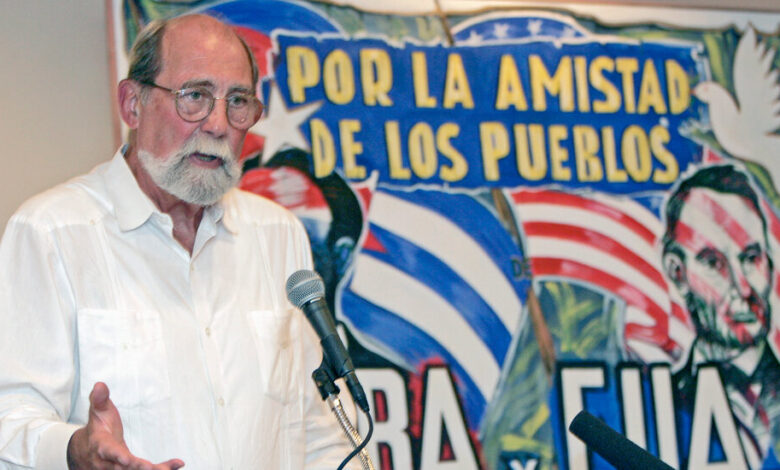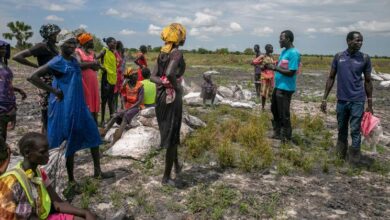Wayne S. Smith, Leading Critic of Cuba Embargo, Dies at 91

Wayne S. Smith, a veteran Cuba expert at the State Department who resigned in protest of the U.S. embargo on the island in 1982 and spent nearly four decades leading efforts to restore relations between Washington and Havana, died June 28 at his home in New Orleans. He was 91.
His daughter, Melinda Smith Ulloa, said the cause was complications of Alzheimer’s disease.
For more than 24 years after joining the State Department in 1958, Mr. Smith represented the United States in Havana, whether he was physically present in the Cuban capital or working in Washington.
Then, after leaving the State Department, he used his extensive experience to wage a persistent campaign against the United States’ strategy of isolating Cuba, leading private and congressional delegations to the island in an effort to build a path to dialogue.
“He was one of the leading spokesmen for normalization,” William LeoGrande, a Cuba expert at American University in Washington, said in an interview.
A witty and quick-witted writer, Mr. Smith produced numerous opinion articles, magazine essays and books, including the memoir-history, “The Nearest Enemy: A Personal and Diplomatic Account of U.S.-Cuba Relations Since 1957,” published in 1987.
He often said: “Cuba seems to have the same effect on the United States government as the full moon once had on werewolves.”
Mr. Smith first arrived in Cuba in the midst of the revolution against the Fulgencio Batista government. After the regime fell on January 1, 1959, he oversaw the evacuation of U.S. citizens from Cuba — including future actress Kathleen Turner, whose father worked at the embassy.
He became a vocal critic of the State Department’s hardline stance toward Cuba, and was one of President Jimmy Carter’s picks in 1977 to reopen relations. Two years later, Carter sent him to Havana to run the U.S. Interests Section, representing the United States in lieu of an embassy.
Mr. Smith is no fan of the Cuban regime. But he believes in the power of diplomacy and dialogue, and firsthand experience has convinced him that the embargo is self-defeating and contrary to U.S. interests.
Ronald Reagan’s arrival in the White House signaled a tougher stance in US policy toward Cuba, based in part on the assessment that Fidel CastroThe island nation’s leader has been sending weapons to leftist guerrillas in Central America.
Mr. Smith sent a series of critical cables to the State Department; in response, the department attempted to transfer him to a new post in Uganda. Furious, he resigned in protest in August 1982.
A few weeks later, he published a lament in Foreign Policy magazine, accusing the administration of being “shortsighted” on Cuba for continuing what he saw as a long-standing tradition of error.
“The administration is determined to repeat the mistakes of the past,” he wrote. “Their approach to Cuba is both stale and unsuccessful, and evokes a strong sense of déjà vu.”
Wayne Sanford Smith was born on August 16, 1932, in the town of Seguin, Texas, east of San Antonio. His mother, Opal (Baldwin) Smith, ran the home; his father, Paul Smith, was an analytical geophysicist, a job that kept the family moving around Texas and Oklahoma during Wayne’s childhood.
After graduating from high school at age 16, he convinced his father to sign papers allowing him to enlist in the Marine Corps as a minor. He served in combat during the Korean War, then as a drill instructor at Parris Island, SC, one of the Marine Corps’ main training locations.
He was honorably discharged in 1953, after which he attended Mexico City College (now part of the National Autonomous University of Mexico) on a soccer scholarship.
In 1957, he joined the Foreign Service, where he worked on Cuban and Latin American affairs. He passed the Foreign Service exam in 1958.
He married Roxanna Phillips, who also worked at the State Department, in 1958, just before being posted to Cuba—their trip south, by car and boat, became their honeymoon. She died in 2014.
Along with their daughter, he is survived by their son, Sanford; a sister, Mary Paul Smith Jespersen; and two grandchildren. A previous marriage, to Jacqueline Perkins, ended in divorce, and a son from that marriage, Wayne Smith Jr., predeceased him.
Mr. Smith also served in Argentina and Brazil. He received two master’s degrees from Columbia, in philosophy and international relations, both in 1962. He also received a doctorate in political science from George Washington University in 1977.
After retirement, he served as a fellow at the Carnegie Endowment for International Peace, taught at the School of Advanced International Studies at Johns Hopkins University, and in 1992 joined the Center for International Policy, a progressive think tank, as a senior fellow.
The embargo on Cuba remains in place, and in that sense, Mr. Smith did not live to see his efforts succeed. But in 2015, the United States re-established relations with Cuba and reopened its embassy. Mr. Smith was in Havana to witness the flag-raising ceremony.
“Cuba is my life,” he said in a video interview told The New York Times in 2015. “I was there when we broke up, so I want to be there again when we raise the American flag over the old embassy. It will be a great day for all of us, but especially me, because I was there when we took the flag down.”




